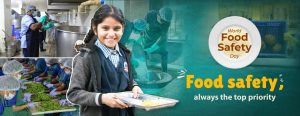
You don’t need to be a superman to bring about change. All it requires is the will and the courage to take a small step towards the change.
Vaibhav and Rashmi have set such an example. They got married on 13th December 2009. Both of them wanted to contribute towards a social cause while they tie the knot. They chose a few NGOs working for different causes and tried to help them through their wedding function. They bought the gifts for their guest from a special school for the mentally and physically challenged.
With the help of their like minded friends they got it packed and attached a letter along with it which contained a brief about The Akshaya Patra Foundation and a request for support along with the organization’s contact details.
Apart from this they have also put up a stall in the Marriage Hall along with the food counters where they displayed some banners and posters speaking about the Akshaya Patra Foundation. One of his friend who is in to media got it covered in one of the national newspaper.
This was indeed a commendable job done by Vaibhav and Rashmi whom we have never even known. We got to know about this only a few days back through his blog and was really moved my their humble gesture.
Volunteers often asks us – ‘what can we do?’ So dear friends it’s all within us. We just need to have that spirit to take that single step.
To know more about Vaibhav and Rashmi
ttp://aao-social-service-kare.blogspot.com








